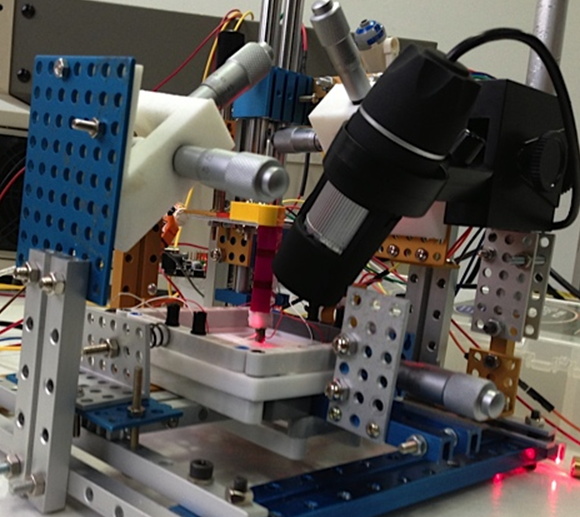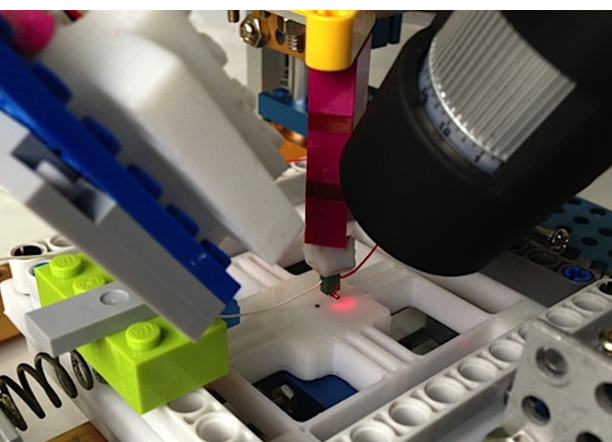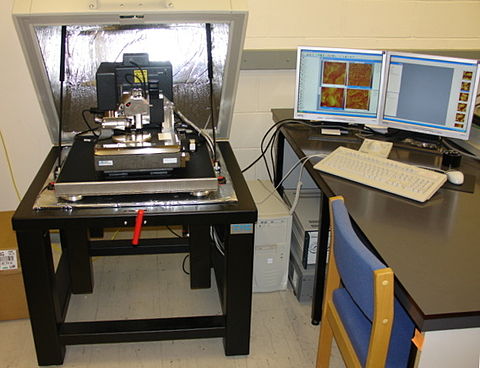How to build a low-cost AFM nanoscope out of LEGO + Arduino board
September 19, 2013

An AFM made from LEGO and electronics (credit: Alice Pyne, London Centre for Nanotechnology)
The world’s first low-cost atomic force microscope (AFM) has been developed in Beijing by a group of PhD students from University College London (UCL), Tsinghua University, and Peking University — using LEGO.
LEGO2NANO brought together students, experienced makers and scientists to take on the challenge of building a cheap and effective AFM, a device able to probe objects only a nanometer in size — far smaller than anything an optical microscope can observe.
The design brief for the student teams: build a functional nanoscope, using only LEGO, Arduino microcontrollers, 3D-printed parts, and consumer electronics.
It took just five days for the student team to demonstrate the scanning functionality of their AFM, earning them the award for Best Technical Design.
The student teams involved in the event will now return to their universities with the goal of continuing their AFM developments and improving the nanoscale resolution of their designs.

Closeup of AFM (credit: Alice Pyne, London Centre for Nanotechnology)
The event was co-sponsored by the LEGO Foundation, and involved active participation by Chinese high-school students, as potential users of such low-cost science tools.
Research-grade AFMs typically cost $100,000 or more, and use custom hardware. The newly designed low-cost version could cost less than $500 to produce.
“Low-cost scientific instrumentation is can be a huge enabler for hospitals and clinics in developing countries too,” notes Gabriel Aeppli, director of the London Centre for Nanotechnology at UCL, a key contributor to the event.
“That’s why novel initiatives like LEGO2NANO are so important.”

A commercial atomic force microscope (credit: Wikimedia Commons)